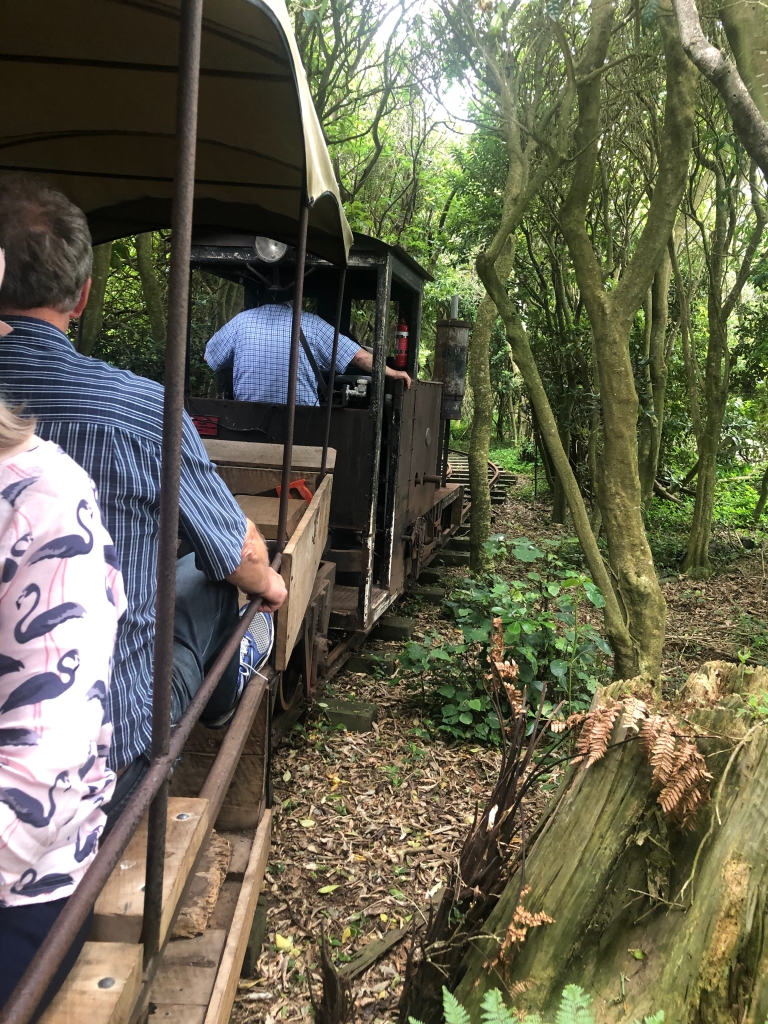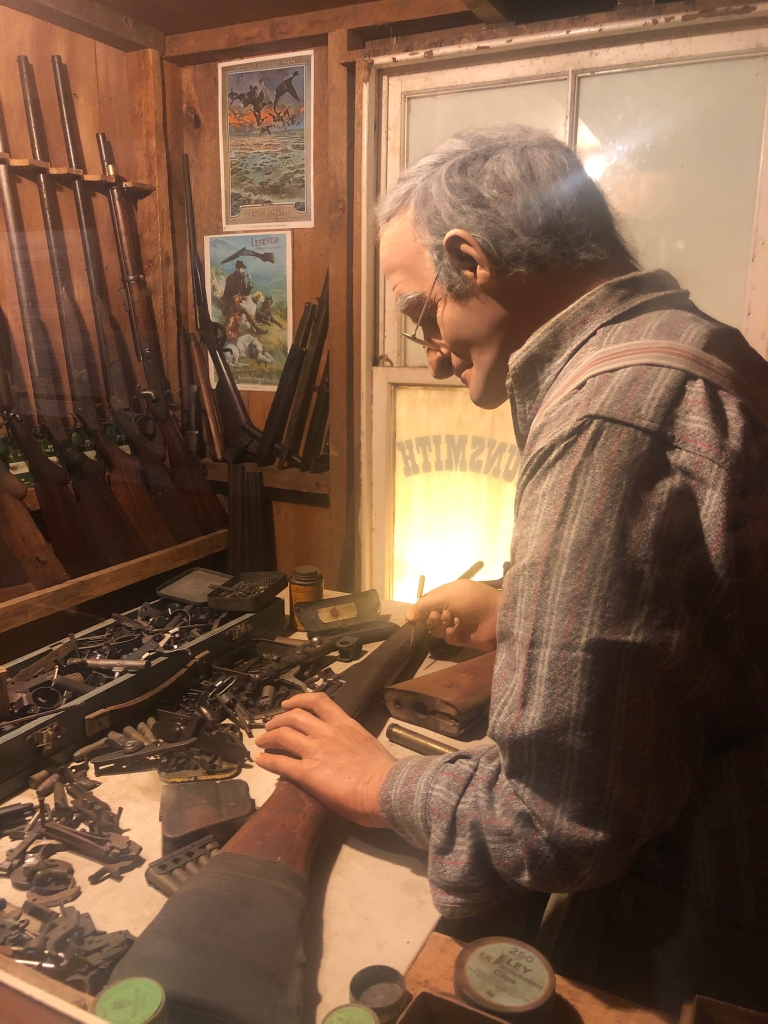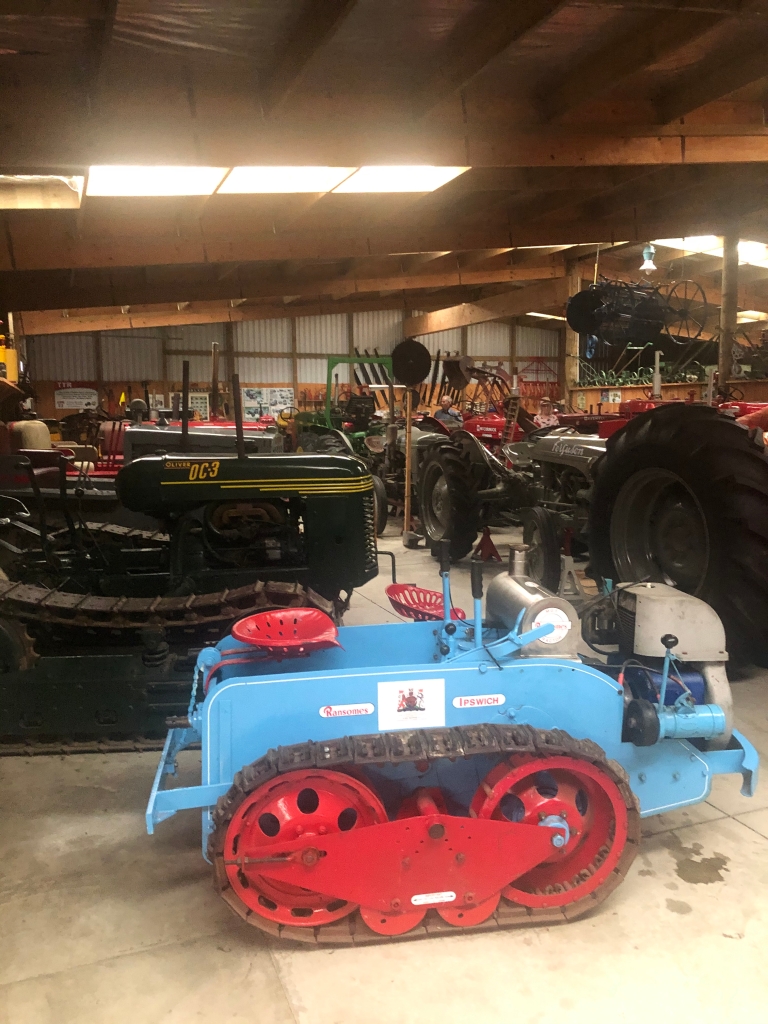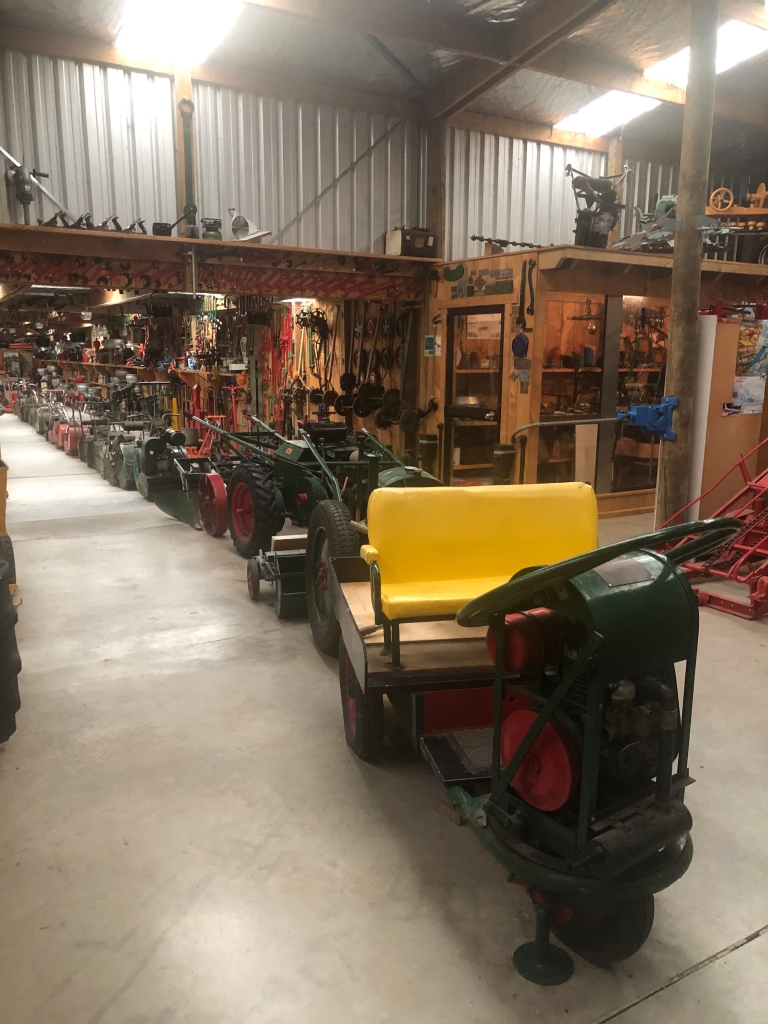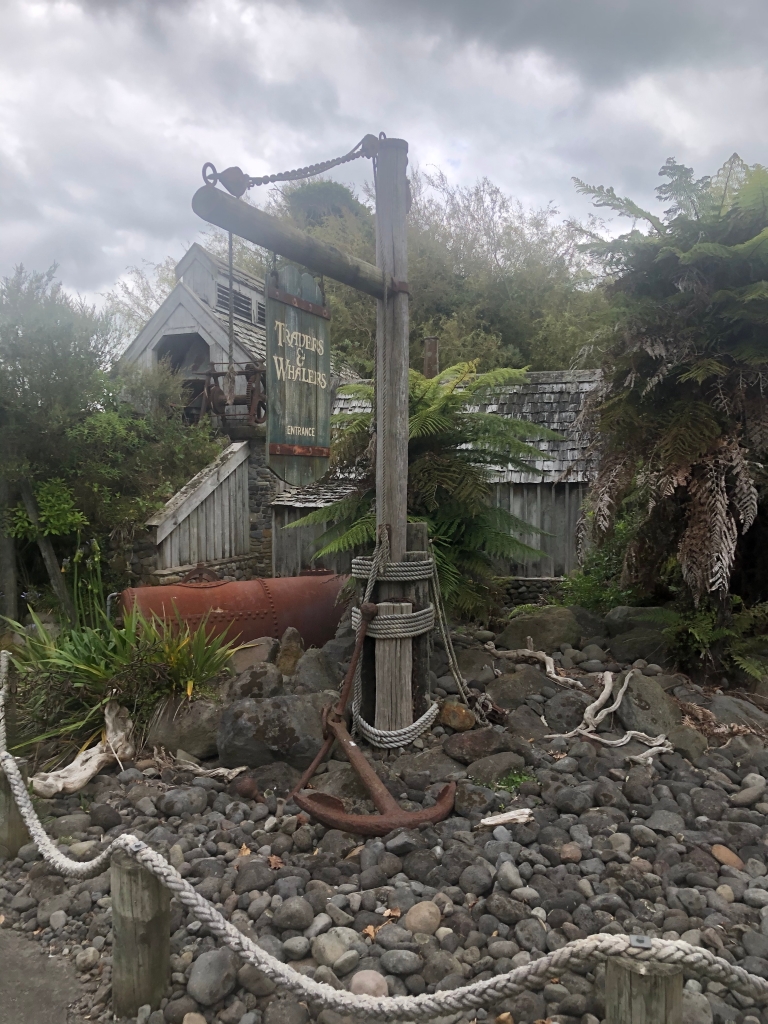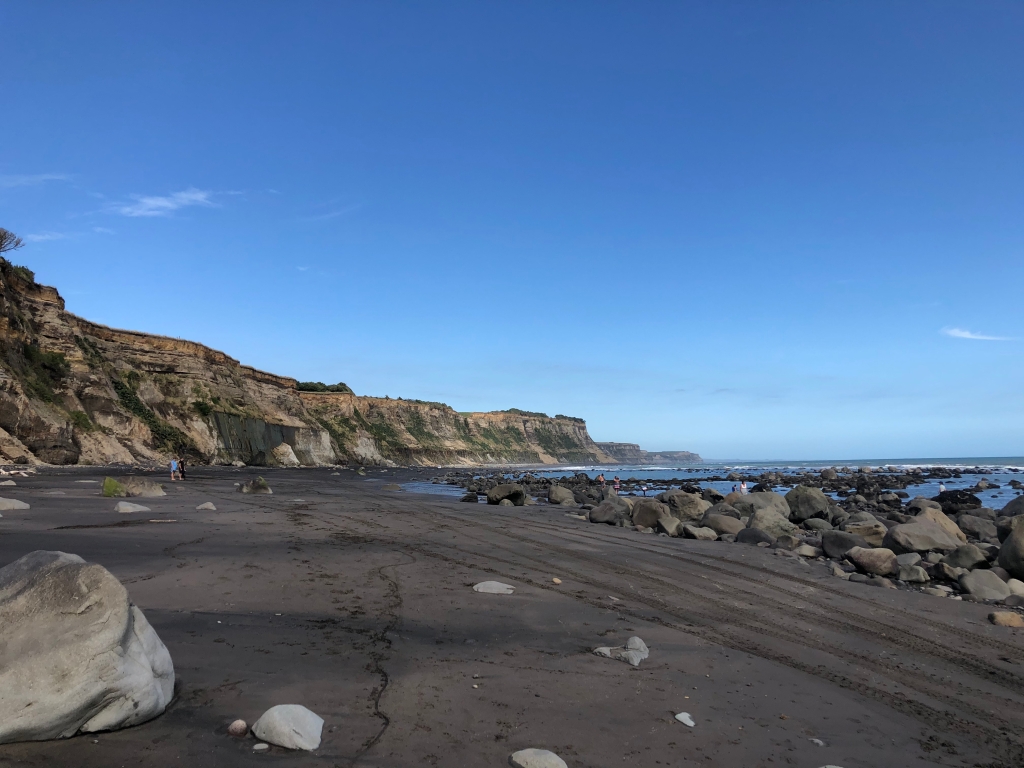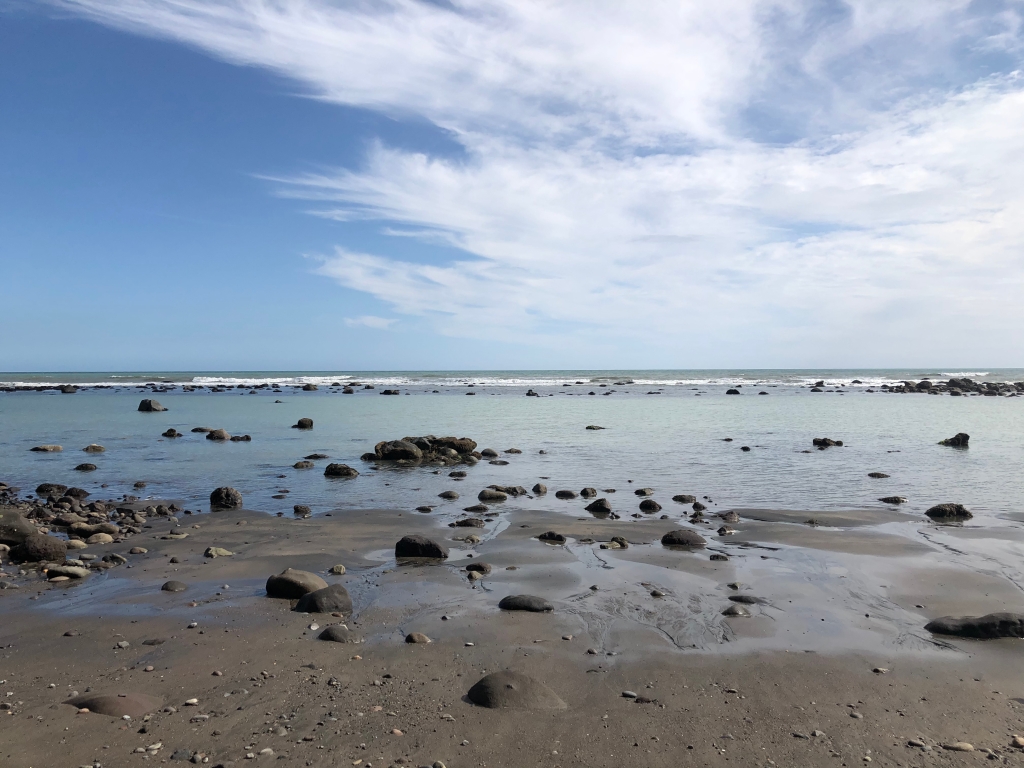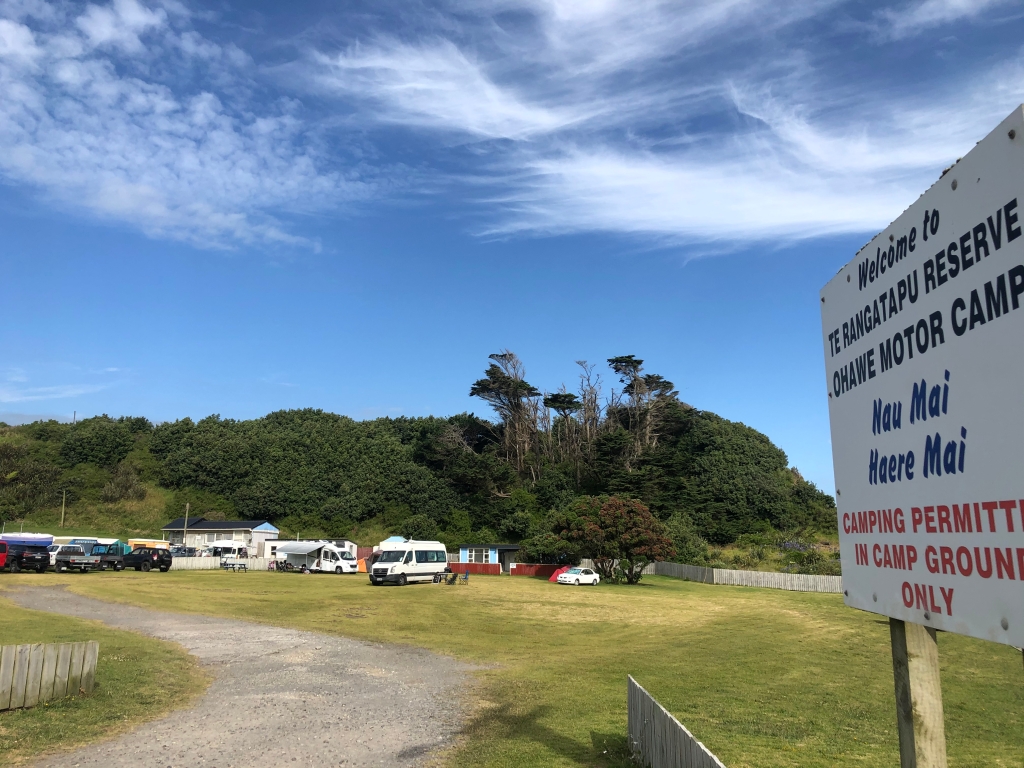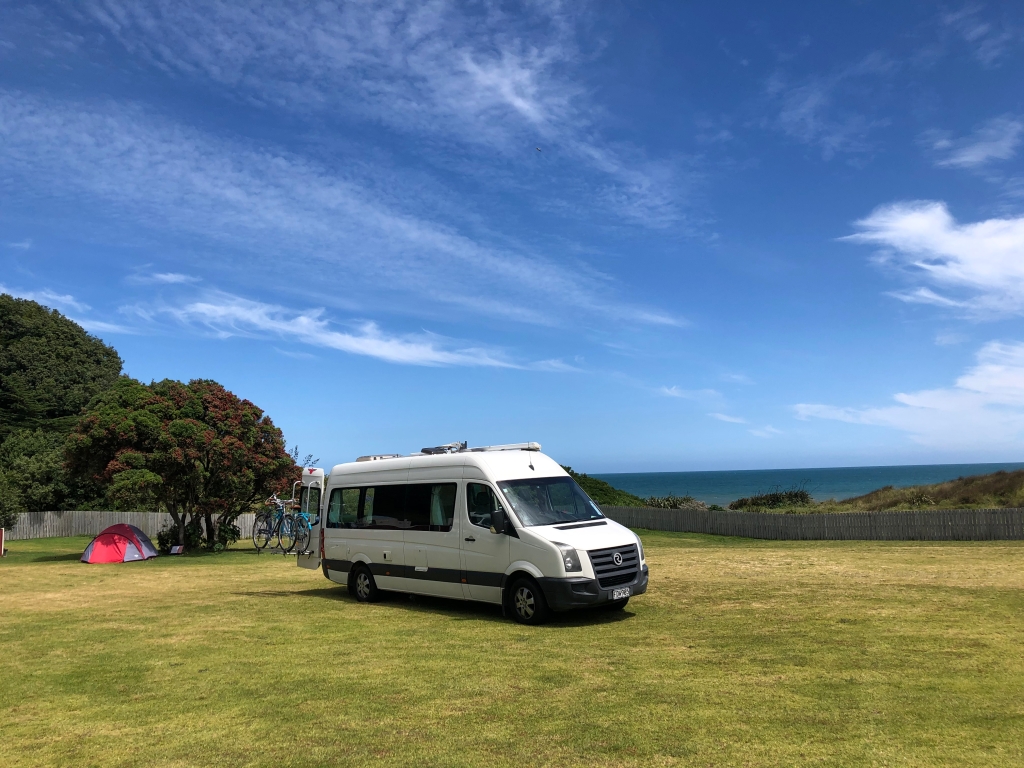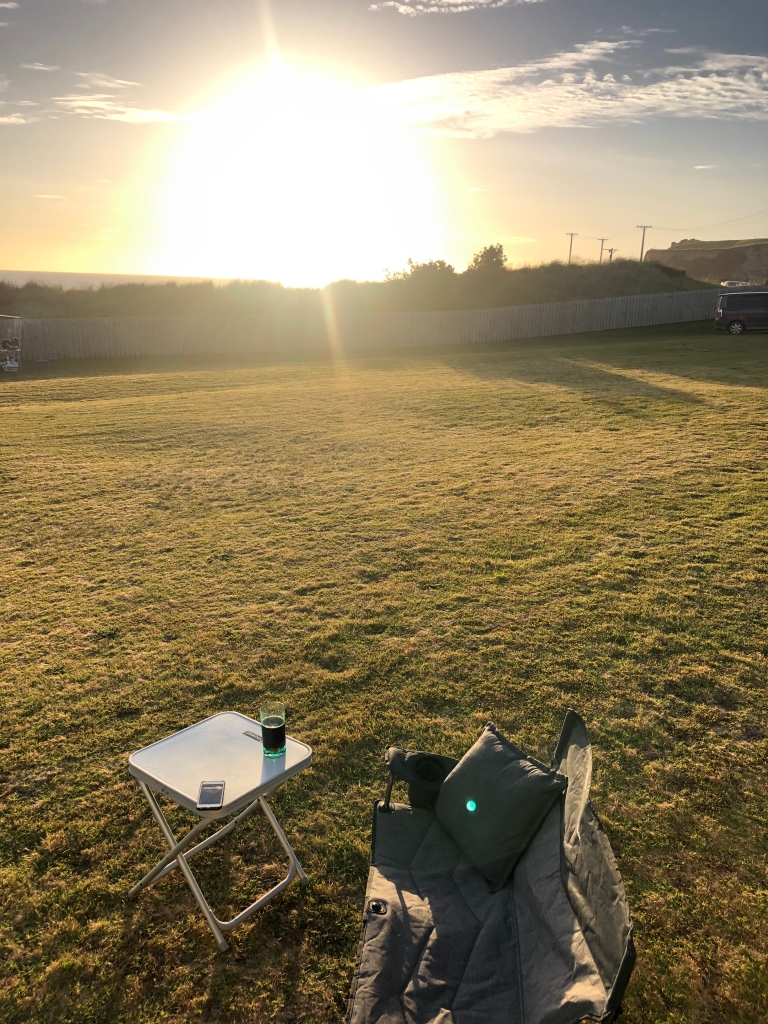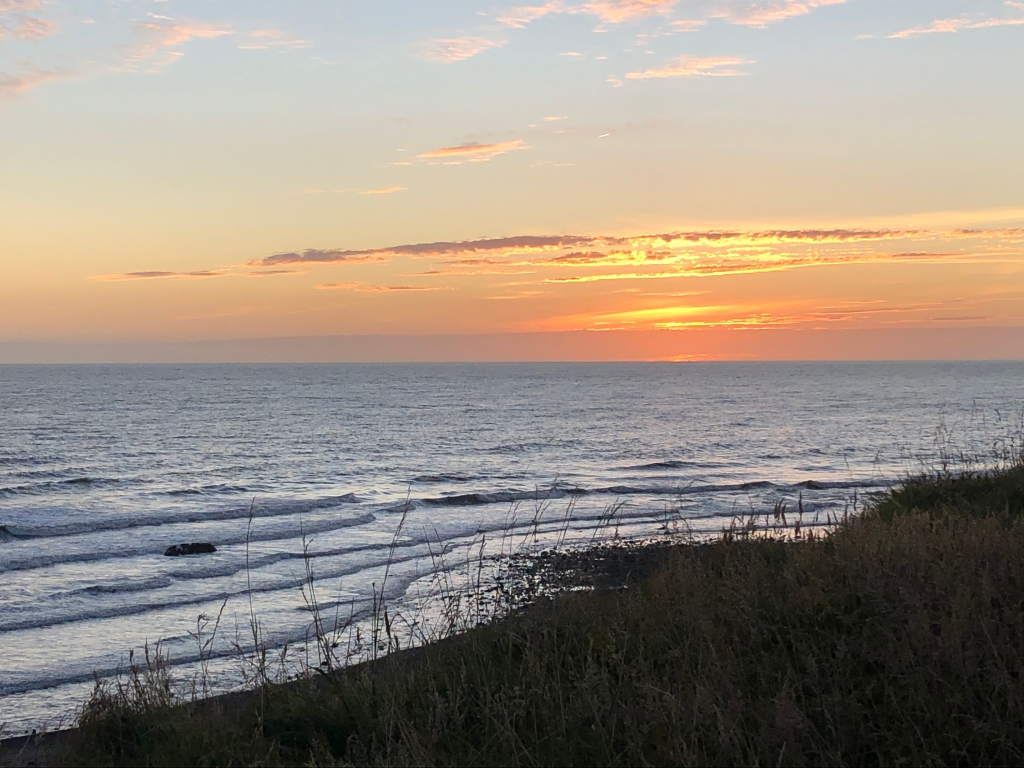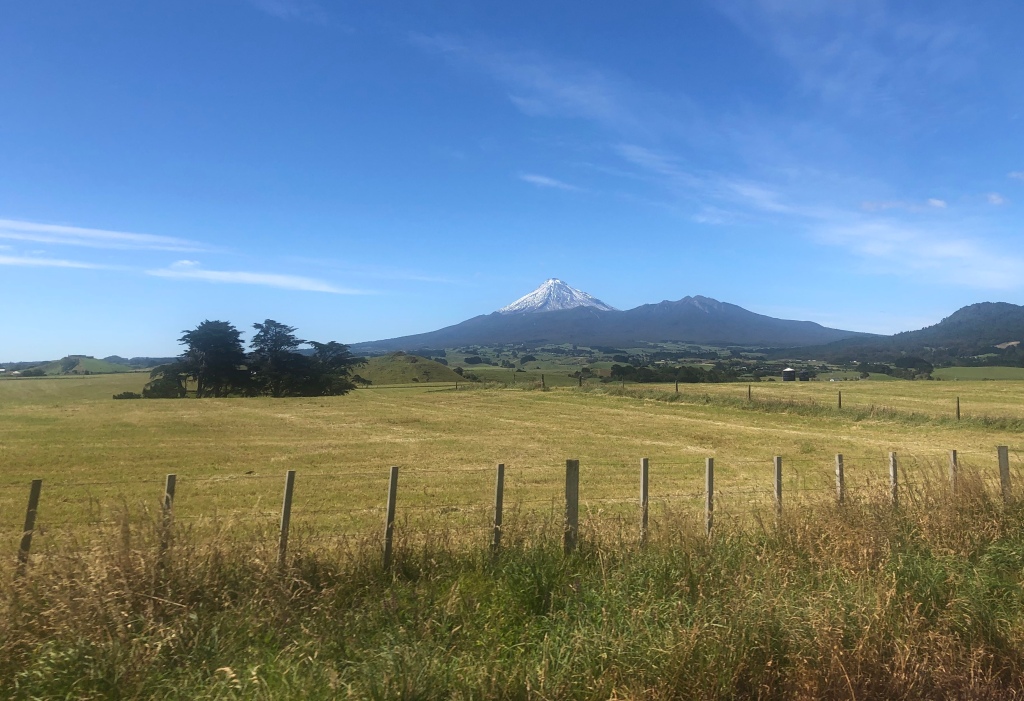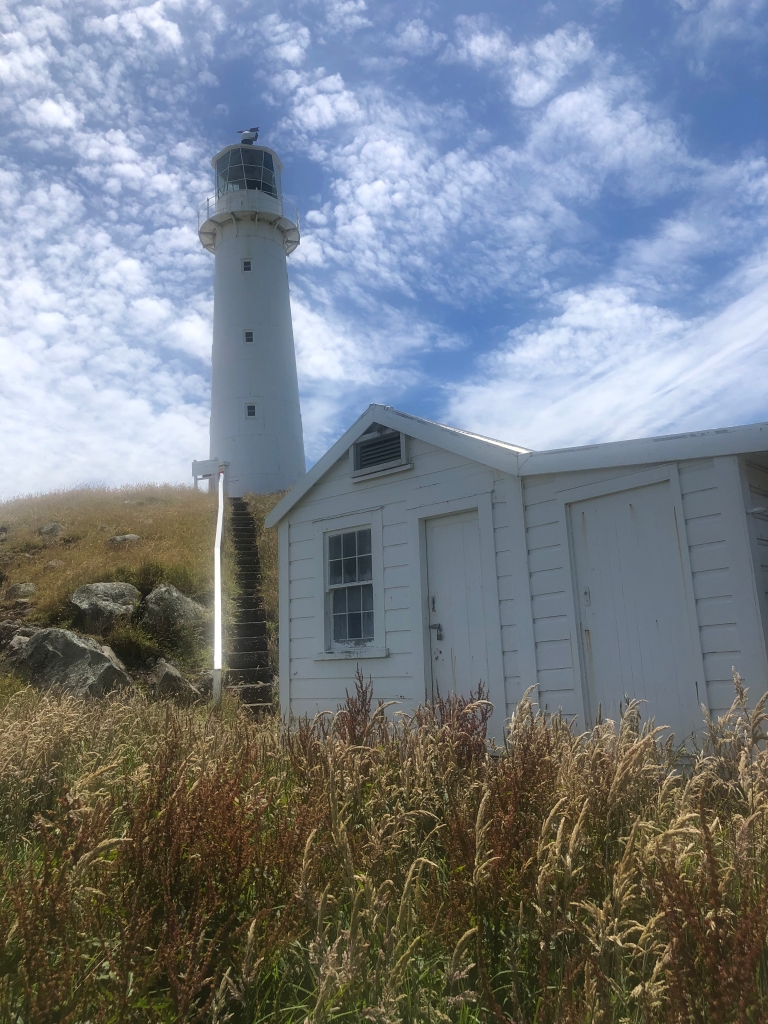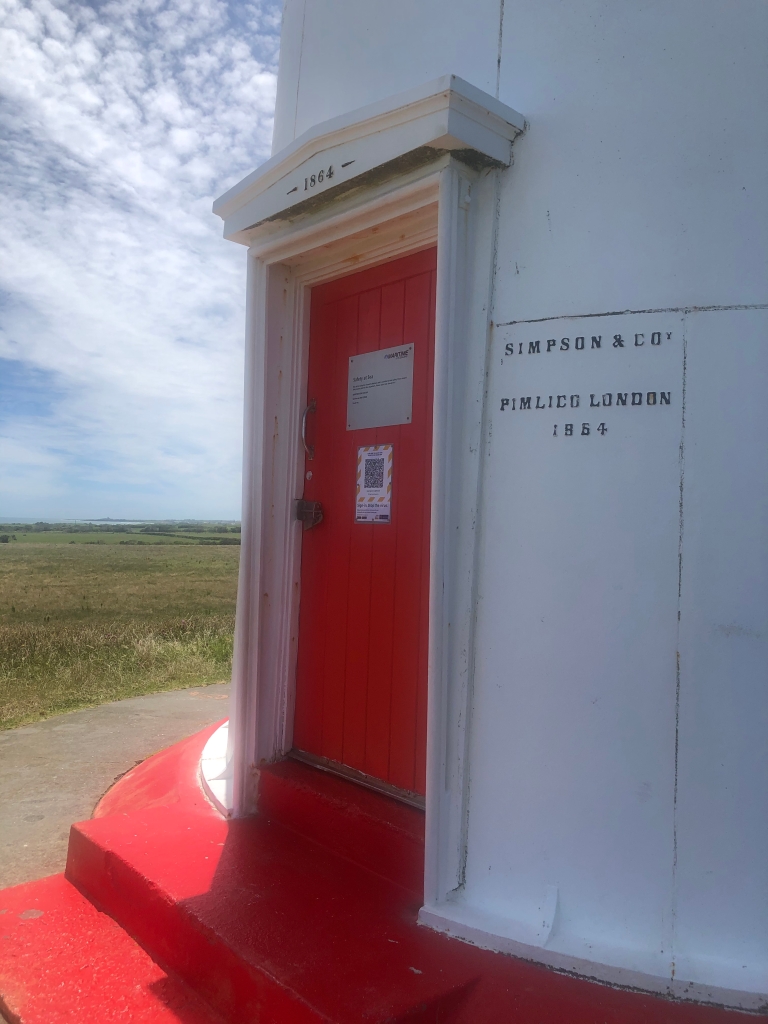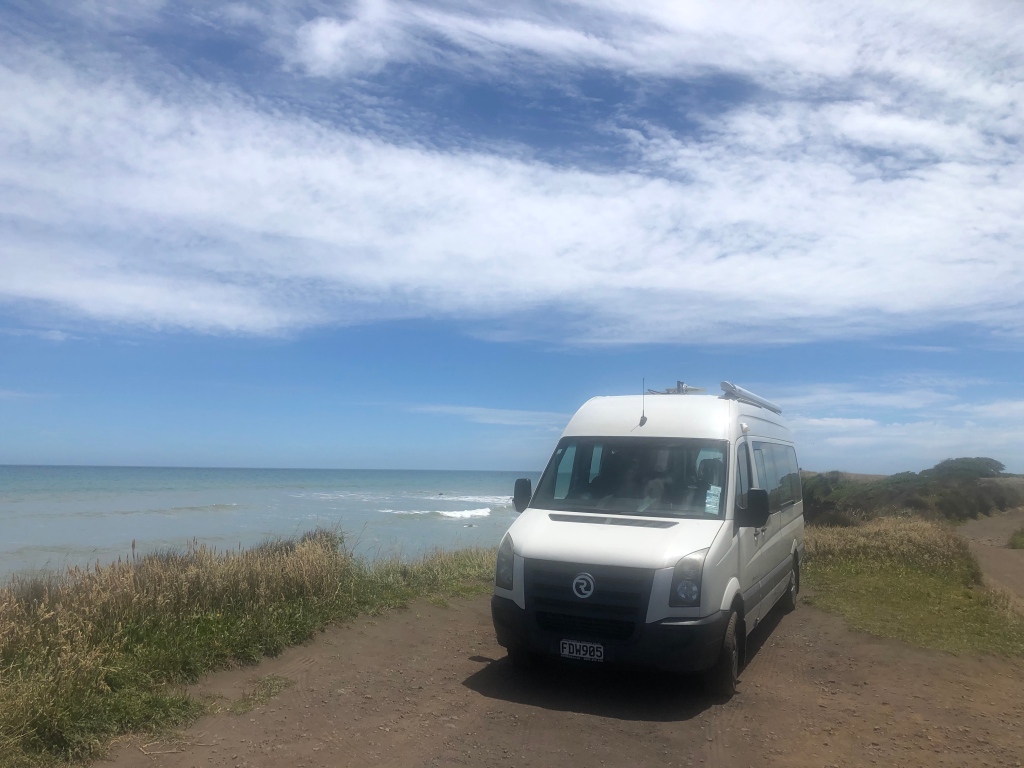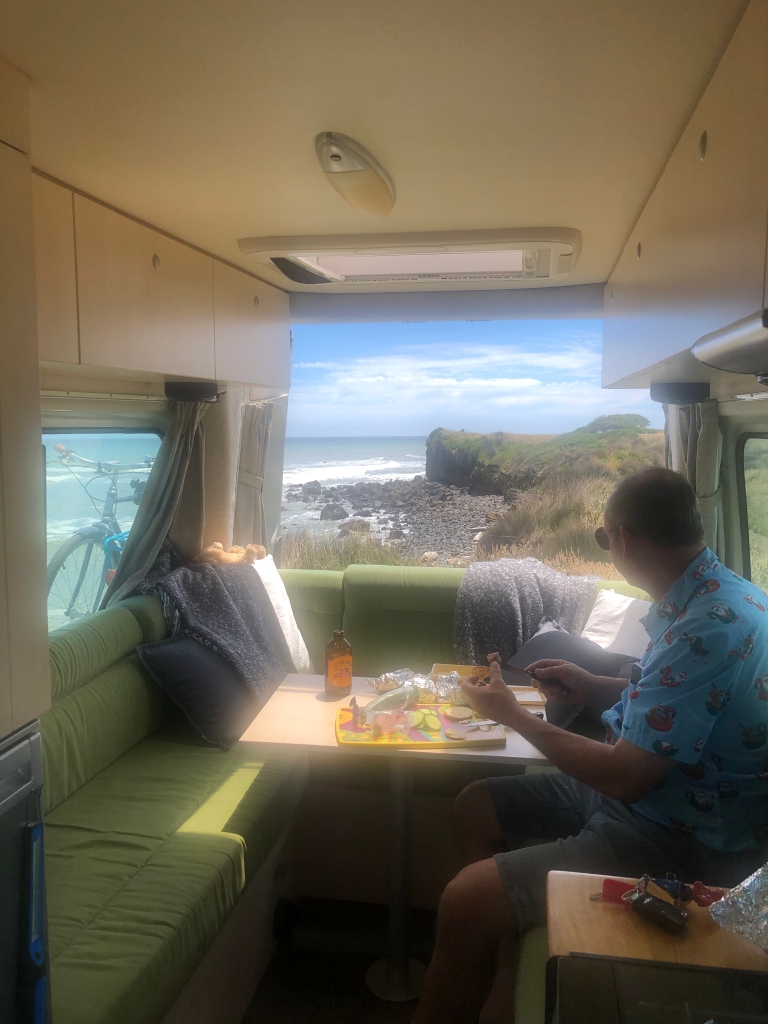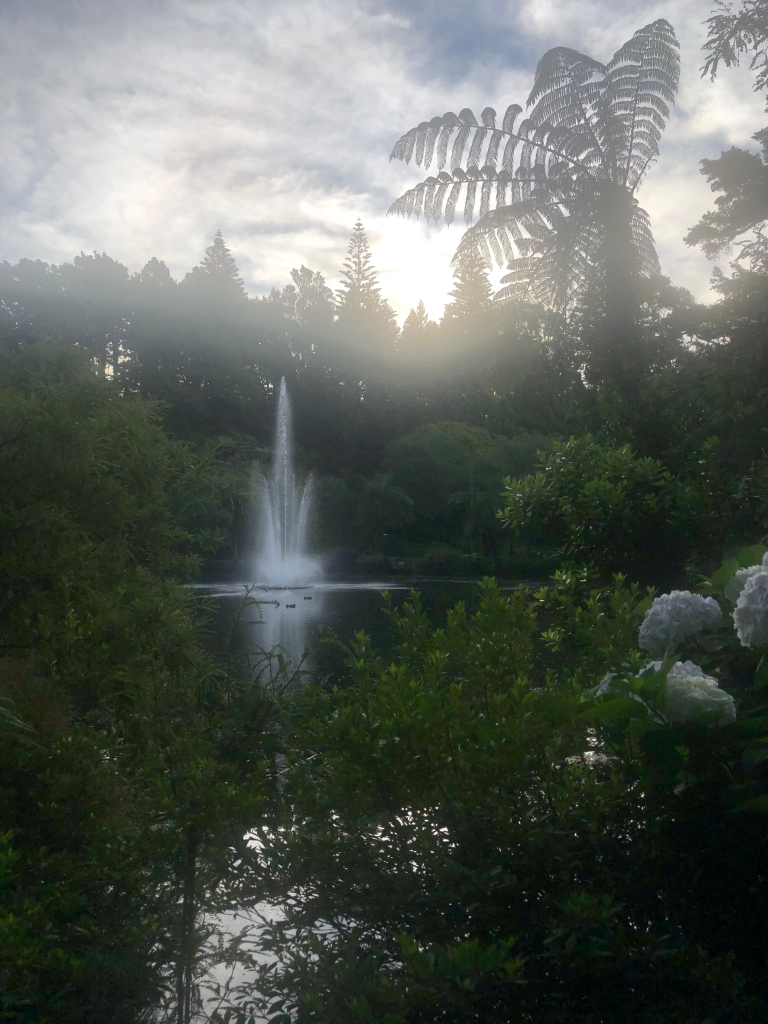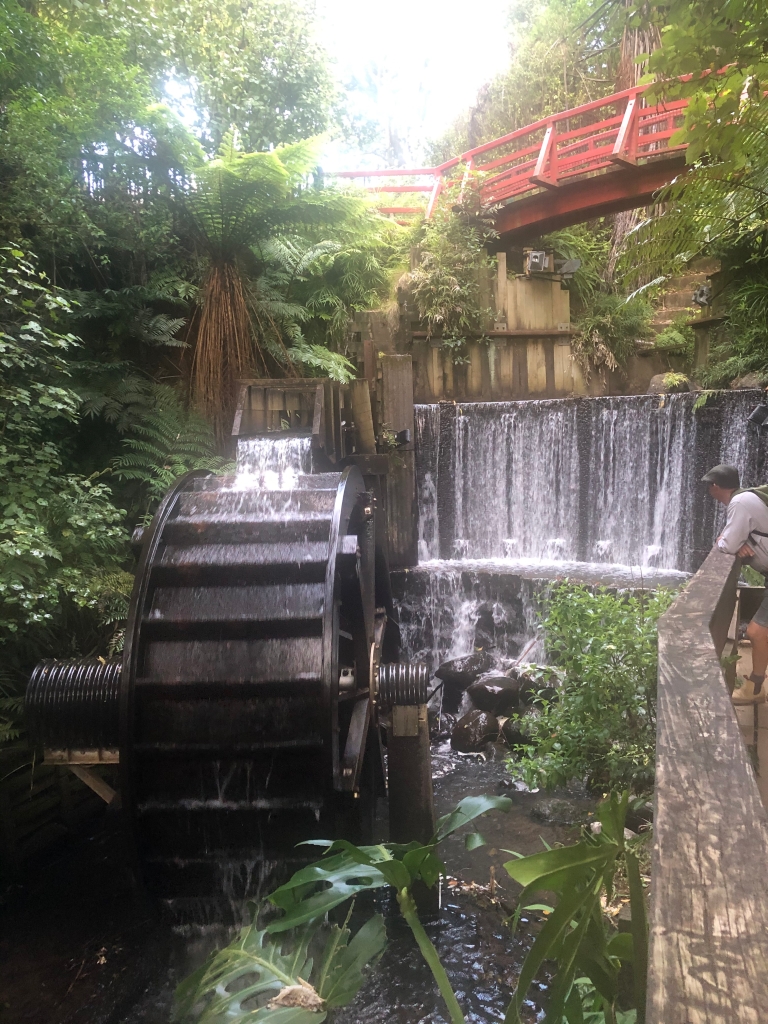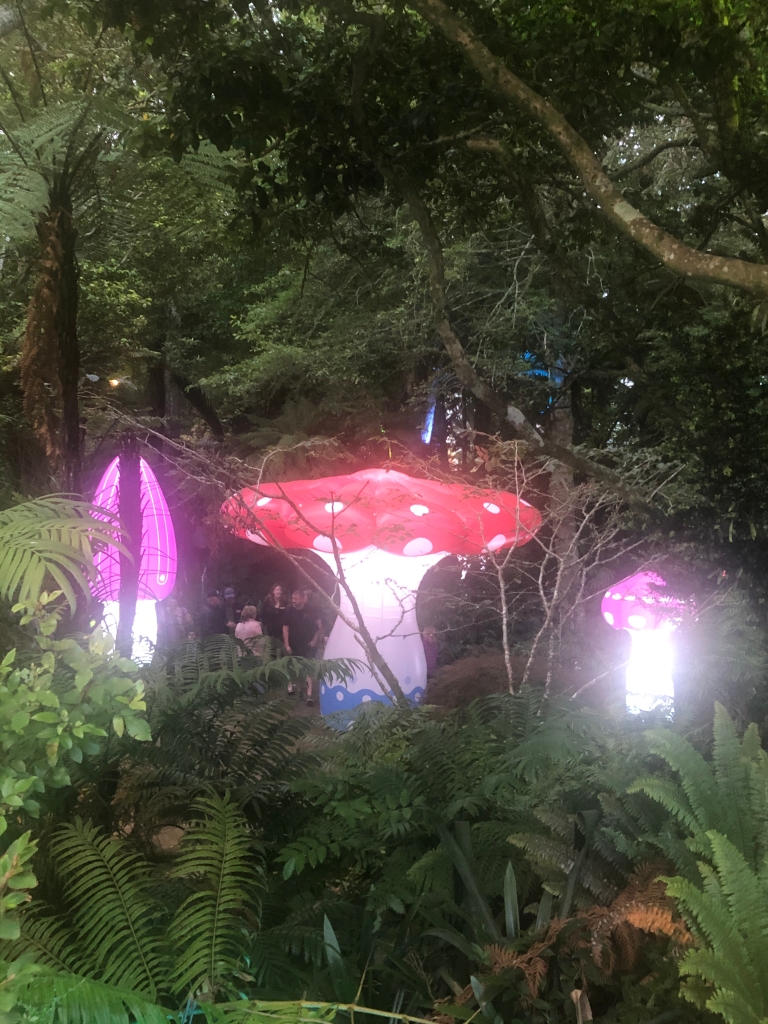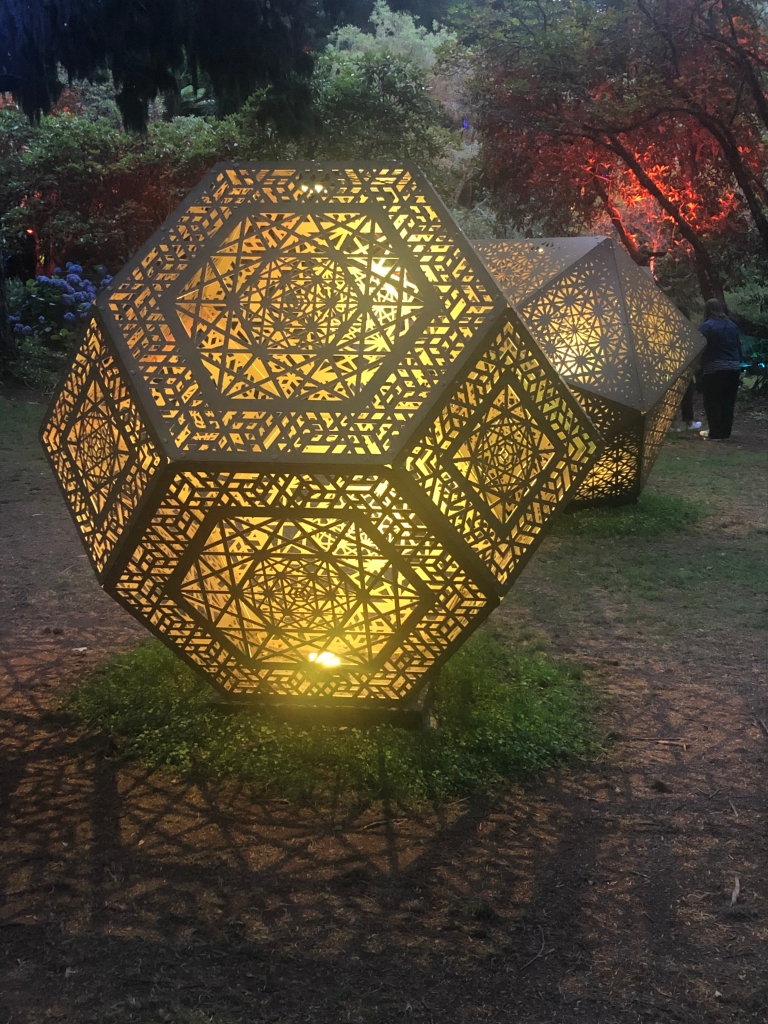A visit to Tawhiti Museum, Hawera
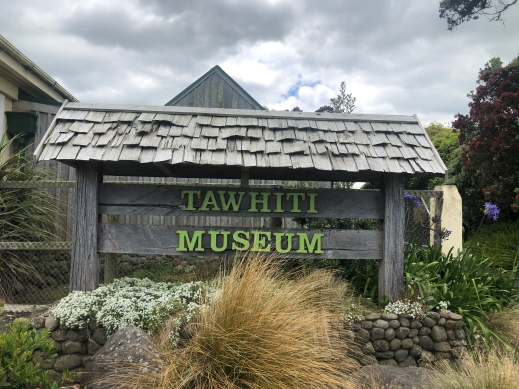
We visited Tawhiti Museum on New Year’s Day 2021 after spending NYE at nearby secluded spot; Ohawe Beach.
The hot summer days we’d had leading up to New Year’s Eve had been beautiful but it was also a nice relief to have a slightly overcast New Year’s Day – a more comfortable, less sticky day with a slight breeze – perhaps it was just me but I felt it gave a calming start to the New Year on a day when a few people probably needed to just kick back and recover!
We did a few errands in the town of Hawera, a lot of the larger stores were open and we were able to pick up some bits and pieces for the van. This was our first major trip away in this campervan and we were still figuring out what we needed or wanted to put into it. And then there are simply things that you forgot! So we picked up things like solar lights, citronella candles, a bluetooth speaker, gas BBQ lighter and some handy dandy double-sided velcro tape that we stapled to the inside of cupboards and use to keep our glass bottles in place. The velcro also works great as a curtain tie-back on the full-length curtain separator we put up behind the front seat. I’ll have to get some more interior photos for a future post about little jobs we’ve done in the van.
Anyway…. we had read about a super little museum on the outskirts of Hawera so we popped along for a quick visit while we were in the area. The little visit turned into a full afternoon! Tawhiti Museum is a tardis of a place with something to appeal to all tastes and between the hubbie and I we were happy to meander around slowly discovering the various exhibits – the only problem was we kept find *another* building, or we’d walk around a corner and find the little shed we entered had morphed into a huge hall!
I’m not complaining here – just pointing out that you might want to ensure you leave enough time for a good look around!
We paid the full entrance fee for the museum, including tickets for the bush railway and Traders & Whalers – a boat-based attraction within the museum grounds.
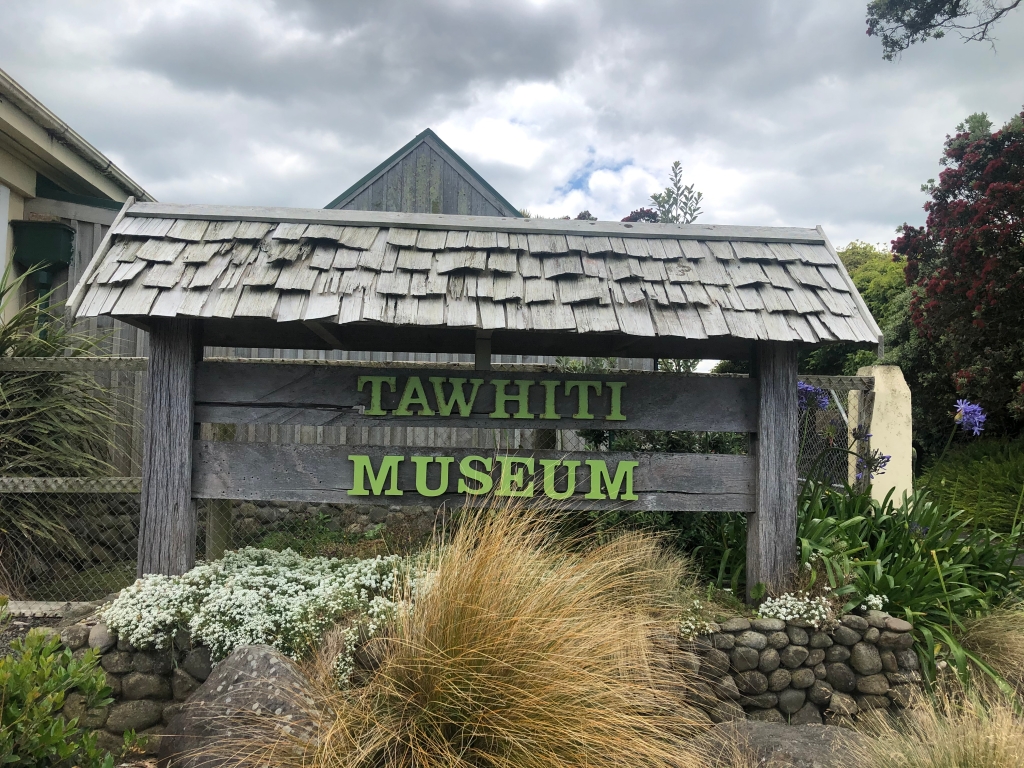

The museum is made up of several groups of buildings, all quite rustic and in keeping with the relaxed feel and character of the place. But before you think this is one of those dusty old shed museums with things just piled up or random old junk put on shelves… think again. Tawhiti Museum has an amazing and very well-presented array of interesting heritage items – from farm machinery to shipping to vintage toys, and wartime memorabilia to kitchen paraphanalia.
One of the things that helps bring the exhibits to life is the attention to detail and realistic figures used to set up various scenes. All the figurines, from the life-size right down to tiny scale models used in dioramas, are made on site in the ‘Body Shop’ which you can view as part of your visit.
The man behind the museum is ex-art teacher Nigel Ogle. Back in 1975 Nigel and his wife Teresa bought the 70-year-old Tawhiti Cheese Factory. Nigel started his small private collection as a hobby but it soon became the focus of public attention and the focus of an impressive visual history of South Taranaki. The museum is now an award-winning visitor attraction and a valued education facility.
We began our visit with a little trip on the Tawhiti Bush Railway, a 2’6″ gauge railway representing the logging railways that used to operate in Taranaki. The track has native planting and a range of buildings alongside the line, with life size figures highlighting how life used to be lived. The end of the track has a reconstructed sawmill set up with a range of historic displays explaining the old sawmilling and timber transportation days.

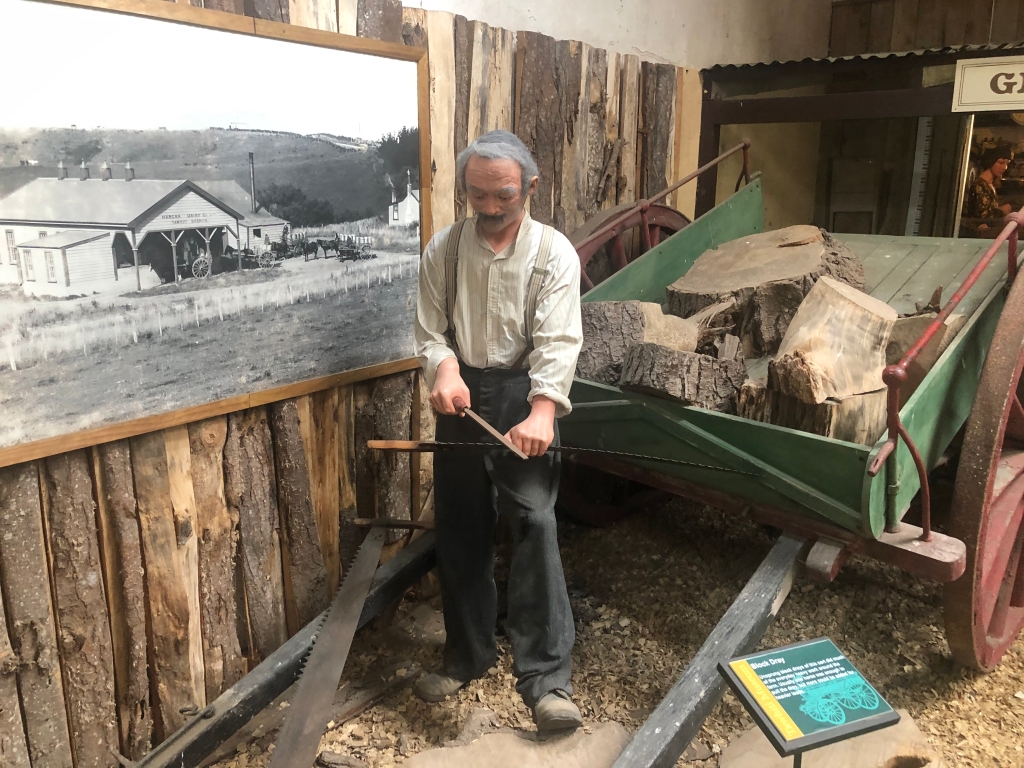



horse-drawn equipment to a powered machines of all types and sizes

Traders & Whalers is set within Tawhiti Museum but does require an additional ticket to be purchased. The attraction is an innovative and historical representation of the Taranaki Coast in the 1820-1840 period. Visitors are whisked away in a boat to learn more about life in this time period as the boatman glides you past and through realistic life size scenes and sounds of the sailors and locals working, trading and battling. Photography isn’t permitted in the attraction but take at look at the video below which features the attraction.
The museum grounds also house a retail shop and a cafe, with plenty of parking and a dedicated area for campervans 🙂
I’ll leave you with this official video from Tawhiti Museum – and a recommend that you make time (plenty of time!) to visit one day!
Ohawe for New Year’s Eve
Ohawe is a small settlement on the South Taranaki coast, just 8km west of Hawera, and was the perfect, peaceful place for us to see out the year with a coastal sunset and great views of the rugged and stunning coastline.
Ohawe is one of New Zealand’s earliest settled places. The first people hunted moa and other birds here about 1300. It was later founded as a military settlement with two redoubts built, one either side of the river mouth. Many of the British and colonial troops who died in later battles are buried in Ohawe Military Cemetery.
Ohawe Beach is very popular with locals and visitors for its rock pools, swimming, surfing and fishing. However, the cliffs that run along the scenic beach are known to be very unstable with frequent rock slides and collapses so caution is needed at all times.
We enjoyed a peaceful and relaxing walk on the black sands at low tide. The shallow waters around the numerous rock pools were clear and warm – providing great areas for paddling and watching the numerous hermit crabs and other small sea creatures.
We had parked up for the evening at the local campsite. Ohawe Beach Camp is administered by the Rangatapu Pa Trustees with all income reinvested into maintaining the campsite and Rangatapu Pa. The site charges a very reasonable small fee per person to cover powered and non-powered sites and use of the facilities which while basic and ‘no frills’ were perfectly functional and clean and included toilets, showers, laundry and a camp kitchen with dining area and small lounge.
It’s a classic kiwi campground from days of old. And we loved it! No playgrounds or jumping pillows. No shop. No cellphone or internet signal. Just a pleasant grassed area on a slight slope with views out to sea and plenty of space for a game of cricket, frisbee or whatever non-digital game takes your fancy!
It was nice to have a range of fellow campers around us, from families in caravans and tents to other couples in campervans and some groups of friends who camped up together so they could have a merry old time bringing in the New Year together!
And when the sun started to set, a number of campers migrated from the site on the short stroll to the nearby clifftop vantage point to watch the sunset. We ambled over with our drinks in hand to farewell the last day of the year. And what a year 2020 was! After such times of angst, worry and uncertainty it was wonderfully calming to just stand and watch the final sunset of the year with others nearby raising a celebratory glass, or enjoying an evening picnic in the last glows of the day.
It was a perfectly peaceful
Midnight saw us tucked up in our bed watching the full moon light up the bay, listening to revellers in the village cheer in the New Year and then a few fireworks from the beach – feeling full of gratitude for this pretty and peaceful New Year’s Eve in this quiet scenic spot…. and…. having our lovely campervan to be able to come away to places like this!
Finally, we made it past New Plymouth…. Cape Egmont
After our night in New Plymouth to see the Festival of Lights we set off to explore the other coastal parts of Taranaki. On our previous visits to this region we have only ever got as far as New Plymouth and then either returned northward to the Waikato or once we had a hair-raising return trip via the internal Forgotten Highway road.
That was way back in our early days as kiwis, long before we had the bus or camper. We were travelling in a small people carrier with our 3 kids and my parents, so a total of 7 people and an old trailer to carry all our luggage. Needless to say, the car was cramped, stops had to be as often as possible – but then again not TOO often as it took so long to get everyone in and out of the car’s multiple layers of fold-down seats – and the luggage got dustier and dustier in the trailer. Then the trailer fell apart – well pretty much… the wheels had an issue with staying on, which is generally not very helpful. Yep – that was a memorable trip!
So back to our Taranaki ventures. It was New Year’s Eve and our plan was to travel around some of the South Taranaki coast and find a nice place to camp up and see in the New Year. One thing we’d spotted on the map that we were both keen to go and see was the historic Cape Egmont Lighthouse.
So yes, this is NOT Cape Egmont Lighthouse. It is a lighthouse that looks like the real one, and is just smidgen away from Cape Egmont itself – it’s the Historic Cape Light & Museum – built to house the original 1850’s lighthouse prismatic lens when the Cape Egmont lighthouse was updated with a modern rotating beacon in 1999.
For a small donation visitors can climb up the small replica lighthouse, with each floor providing interesting historical facts on the original lighthouse, early shipping in the region, plus an exhibit on a famous once-local resident; Lord Ernest Rutherford, whose family once ran a nearby flax mill. Rutherford was a New Zealand born scientist who became the father of nuclear physics when he was the first man to split the atom. He also discovered how to date the age of the Earth, invented the first nuclear detector, and his early experiments are said to have lead to the modern smoke detector. The region is obviously superbly proud of its links to this esteemed scientist and the museum provides an interesting display of his life and his family’s life in Taranaki.
Just a few kilometres along the coast from the lighthouse museum sits the real, actual and still working; Cape Egmont Lighthouse – standing proudly looking out over the coast with the ever-impressive Mt. Taranaki in the background.
The lighthouse was built in London and the segments shipped out to New Zealand in 1865. It was first erected on an island near Wellington but caused confusion to shipping as there was another lighthouse already working further down the coast. After dismantling and shipping to Taranaki the lighthouse became operation as Cape Egmont lighthouse in August 1881 when the light was lit to help ships to pass safely.
The cast-iron tower stands 20m high and 33m above sea level, perched on top of a prominent mound.
The 50watt lamp flashes once every 8 seconds and can be seen for 19 nautical miles (35 kilometres)
The light was first electrified in 1951 and the lighthouse keeper was transferred to another station due to staff shortages. In July 1956 the vessel Calm grounded off Cape Egmont during a gale. The keepers then returned to the lighthouse until it was fully automated in 1986.
The lighthouse competes to steal the show in its picturesque landscape which includes the backdrop of a volcanic mountain and some truly beautiful coastline. Although I’m sure in bad weather the lighthouse would win hands-down as a structure of strength and necessary function that’s stood here for 140 years to help nearby ships and vessels stay safe.
The next post will cover where we end up camping for New Year’s Eve.
Festival of Lights, New Plymouth
If you’re ever in New Plymouth around Christmas/New Year time then you MUST, absolutely must, visit the Festival of Lights.
We have been to the F.O.L. (TSB Festival of Lights) on several occasions. Held in the extensive grounds of Pukekura Park in New Plymouth the annual festival runs for around six weeks every December/January.
It’s completely free of charge to look around the fun and lively light installations that turn on every night from 8.30pm – 11pm. Plus the organisers put on a whole array of other entertainment throughout the festival, with musical performances, kids activities, an outdoor cinema, roller skating, food vans, and of course the popular row boats on the lake.
We discovered it several years ago and since then have made the trip back to New Plymouth JUST to see the lights and come home the next day! Now of course we have a campervan again it gives much more flexibility on taking a Taranaki trip 🙂
We had been parked up at the popular Lake Rotomanu but decided that was a little too far away from the CBD and Pukekura Park so we drove into New Plymouth to park up elsewhere. As members of the NZMCA (strongly recommend this) we discovered they had one of their wonderful Members’ Parks in New Plymouth so we headed over there to see if there was a space for our van.
The NZMCA Parks have a range of basic facilities, most do not have toilets etc as they are intended for self-contained campers, so you might find they just have fresh water and rubbish bins – which for the grand price of $3 pppn is an absolute bargain! We signed in and found a suitable spot amongst the other campers. We’d considered going straight to Pukekura Park in the camper and THEN going to try and find a campsite space but didn’t want to risk being left high and dry with no space at the inn once we left the festival later in the evening. What we hadn’t really considered, but will be taking action to prepare for now, is that once members have paid and secured a space at an NZMCA Park, you can then reserve your space and go back out in your vehicle – Excellent scheme!! There are a few rules and conditions around this including leaving a RESERVED sign and registering in the site book, so we will be sure to be set up and ready with our signs and traffic cones in the van for future use!
As it is, it was a fine evening and the site wasn’t *too* far from the Park so we decided to walk. It may also have been to help walk off some of these Christmas calories as we’d bought a few leftovers and goodies with us!
Here are a few pics from the Festival – I didn’t get one of each light installation but hopefully enough to whet your appetite!
Those interested in a bit of history might like to learn that the Festival of Lights came about in the main due to Queen Elizabeth II.
A fountain was installed in the park’s Fountain Lake in 1953 to commemorate the Queen”s coronation. Lights were also installed on Poet’s Bridge and around the Main Lake. Lights were added to the fountain two years later when the Queen and the Duke of Edinburgh visited New Plymouth.
Fast forward to 1970 and music and entertainment become a feature of the annual lights event and in 1993 it was officially named the Festival of Lights.
Coming up next.. ..our trip continues around South Taranaki and beyond.

